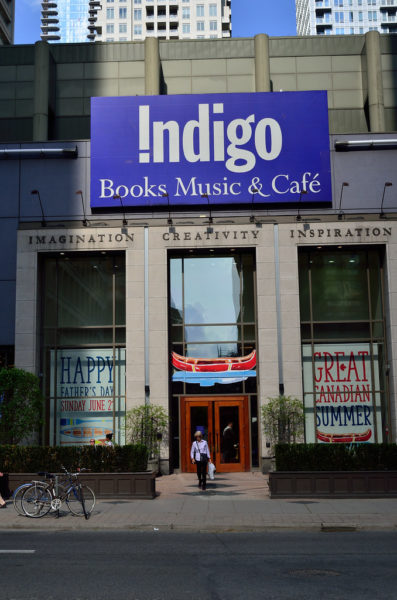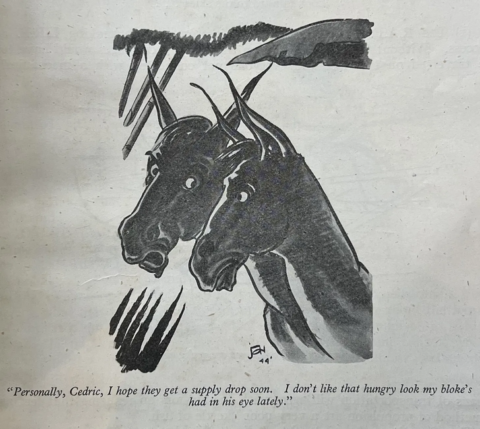Forgotten Weapons
Published 25 Oct 2017After World War Two, both the Beretta and Breda companies in Italy began manufacturing M1 Garand rifles. When Italy decided that they wanted a more modern selective-fire, magazine-fed rifle, they chose to adapt the M1 Garand to that end rather than develop a brand new rifle. Two Beretta engineers, Vittorio Valle and Domenico Salza, began work in 1957 on what would become the BM-59. Prototypes were ready in 1959, trials were run in 1960, and by 1962 the new weapon was in Italian military hands.
The BM59 is basically an M1 Garand action and fire control system, but modernized. The caliber was changed to 7.62mm NATO, and the barrel shortened to 19.3 inches. A simple but effective selective fire system was added to the fire control mechanism, and the en bloc clips replaced with a 20-round box magazine (and stripper clip loading guide to match). A folding integral bipod was added to allow the rifle to be used for supporting fire on full auto, and a long muzzle device was added along with a gas cutoff and grenade launching sight to allow the use of NATO standard 22mm rifle grenades.
In this form, the BM59 was a relative quickly developed and quite successful and well-liked rifle. In addition to the Italian military, it was purchased by Argentina, Algeria, Nigeria, and Indonesia. A semiautomatic version was made for the US commercial market and designated the BM62, and a small number of fully automatic BM-59 rifles — like the one in this video — were imported into the US before the 1968 Gun Control Act cut off importation of foreign machine guns.
(more…)
September 18, 2023
BM59: The Italian M14
QotD: Feelings
The desire not to have one’s feelings hurt has been erected into a right, a right increasingly enforceable at law. Of course, not everyone’s feelings are treated with the solicitude that we show to a nice fluffy colorful species of animal that is, regrettably, on the verge of extinction. But there is no doubt that treating people’s feelings with this solicitude tends not only to preserve them but to cause them to flourish and multiply. The more you are preserved from hurt feelings, the more of them you have.
Theodore Dalrymple, “Once More With Feelings”, Taki’s Magazine, 2017-05-13.
September 17, 2023
The Ballad of Chiang and Vinegar Joe – WW2 – Week 264 – September 16, 1944
World War Two
Published 16 Sep 2023The Japanese attacks in Guangxi worry Joe Stilwell enough that he gets FDR to issue an ultimatum to Chiang Kai-Shek, in France the Allied invasion forces that hit the north and south coasts finally link up, the Warsaw Uprising continues, and the US Marines land on Peleliu and Angaur.
(more…)
Why Indigo’s struggles are far from over
Following up from last week, in this week’s SHuSH newsletter Ken Whyte explains why Indigo went in the direction it chose and why it seemed like the thing to do at that time:

“Indigo Books and Music” by Open Grid Scheduler / Grid Engine is licensed under CC0 1.0
Bookselling is a difficult business and it’s been especially difficult over the last twenty years. The Internet captured a lot of the used book business and shifted it online. Amazon captured a lot of the new book business and shifted it online (and bought Abebooks.com, one of the largest used book sites).
Former Indigo CEO Heather Reisman tried and failed to convince the federal government to keep Amazon south of the border back around 2002. She went so far as to sue the feds on the grounds that Amazon, as a cultural entity, was not majority-owned by Canadians and therefore operating in contravention of the Investment Canada Act. The suit went nowhere because Amazon then had no physical presence in Canada; it operated primarily through Canada Post. By the time Amazon did announce its intention to build a warehouse north of the border, early in 2010, the government had given up enforcing the Investment Canada Act. It was happy to have Amazon create new jobs.
It was when Amazon opened its Canadian warehouse that Heather began backing Indigo out of the book business. She cursed Amazon for its anticompetitive practices, not least its habit of selling books below cost to destroy competitors, and adopted the term “cultural department store” as a pivot from bookstores.
I’ve made it clear in newsletter after newsletter that I don’t like the direction Heather took Indigo but it’s only fair to look back at prevailing circumstances in 2010 and wonder if she really had a choice.
I’m sure she had stacks of research and hordes of people telling her that abandoning books was the only move. Attempting to compete with Amazon’s enormous scale and superior logistics would have struck many as a fool’s errand. Amazon would always have the largest selection, the best price, and the fastest delivery.
There was also a widespread belief that print was dead. E-books, e-readers, and tablets were the future, along with the “one very, very, very large single text“. Global e-reader sales were growing like this:
They were expected to keep growing. So were sales of e-books. In 2012, the Financial Post quoted data from Indigo predicting that e-books would capture 50 percent of the market in five years.
So, having played the Canadian Nationalist card and discovering that the government was willing to bluster but not to meaningfully act, Heather Reisman took the advice of her consultants and diversified away from books and into all the utter crap that currently befoul at least half of the retail space in every Indigo store. After all, the big box bookstores in the United States were clearly failing in the face of Amazon, with Borders filing for bankruptcy and Barnes & Noble staggering in the same direction. From 1999 to 2019, fully half of all the bookstores in the country disappeared.
The story isn’t as bleak as it looked in 2019, as Barnes & Noble is staging quite a comeback by concentrating on the book business. It’s a radical move, but Indigo could do far worse than cooking up a maple-flavoured version of the Barnes & Noble strategy. It might fail, but they’ll definitely fail if they keep on pretending to be a department gift store that also has a few books.
Why Operation Market Garden Failed and Its Devastating Consequences
OTD Military History
Published 5 Apr 2023Why did Operation Market Garden fail and what were the consequences of this failure? This video covers the operation, the reasons for the failure, and its devastating aftermath. The impact Market Garden had on the Dutch during the Hunger Winter and Allied soldiers during the Battle of the Scheldt is explored.
There is footage of the 101st US Airborne, 82nd US Airborne, British 1st Airborne Division, and the troops of the British XXX Corps featured in the video.
(more…)
QotD: One of the most successful propaganda campaigns in history
[In the 1960s and 70s, mob-controlled cigarette smuggling seriously cut into tobacco taxes.] What the PTB should’ve done at that point, of course, was simply repealed the taxes, learned to live within their means, and stopped trying to nag their citizens into good behavior …
Ok, ok, is everyone done laughing yet? Go ahead, get it all out of your system; I’ll wait. Everyone back? Ok, moving on:
What the PTB actually did, of course, was a multi-level propaganda campaign. It was brilliant. It took a few years, of course, but the evidence is all around you. Quick: When’s the last time you saw anyone smoking in a mainstream movie? Even period films about the Forties, say — the ones where they take infinite pains to get just the right period-appropriate shade of Formica on the diner’s countertops — ignore the obvious historical reality of people puffing away like chimneys.
Indeed, it’s all but universal now, and has been for a long time, that characters who smoke are the bad guys.
Here again, look at college kids. I hate to keep beating this dead horse, but it’s really the best example I know of the phenomenon. Any time I taught the Early Modern period, I had to mention the massive economic and cultural effects of tobacco. So I encouraged kids to try it for themselves — everyone here is over 18, I said, so it’s perfectly legal. Want to know what all the hype was about? Just run down to the gas station, buy a pack, and light one up!
Around the turn of the century, I always had a few smokers in class, so I could say “bum one off So-and-So”. Even that would get me a few uneasy chuckles. A few years later, and not only were there no smokers in my classes, but the kids would be actively uncomfortable with the suggestion. By the end of my teaching career, when I couldn’t care less anymore, I was openly taunting them about it. You people have no problem with potheads, I’d say. I bet well over half of you are on Ritalin, Prozac, Xanax, Klonopin, shit that’s bad for you, in ways we don’t even understand yet, but you’re balking at one cigarette? It’s unsafe? Oh, come on, some of you are going to leave here and go light up a completely unfiltered ditch weed, and as for the rest of you, you know all about crazy sex fetishes I’ve never even heard of. You get blackout drunk at the football games every weekend, but oh no, you can’t have one cigarette, it’s so unhealthy.
Such is the power of propaganda, and it’s the only repression that works for the PTB when they’ve truly set their faces against a behavior …
Severian, “The Mob, Faux-tism, and the Ever-Rising Costs of Compliance”, Founding Questions, 2021-02-02.
September 16, 2023
Is Canada knowingly running a massive educational swindle on poor Indian students?
If even half of what Stephen Punwasi reports here is true, then the Canadian government and higher education ministries in the provinces deserve nothing but abuse:
The thread continues:
4/ 🇨🇦, addicted to the cash, cooked up a $148m plan to replace those students with new ones—primarily in developing countries.
Permits to students from India spiked fast… strangely fast. Who are these students? Get a spoon to bite, because this is where it gets f*cked.
5/ India is a FAST growing country, forecast to have the world’s largest middle class soon. It has wealthy families, but they aren’t moving here. An Indian university study found most students looking to study in 🇨🇦 are from low-income farming regions & know little about it.
6/ What they “know” is what the recruiter told them: It’s filled with opportunity, automatic PR, guaranteed gov jobs, etc. Sometimes, the recruiters “get them in” to prestigious schools they could never actually get into. All lies—they’ll say anything for the commission.
7/ Recruiters tell these families their kid is brilliant & just in the wrong country. Find a way to pay their education, & all of the parents’ hard work pays off. Bet the farm, like good parents do. So they round up their savings (& sometimes relatives). They take out loans.
8/ Heck, some literally bet the farm. Oh, some recruiters know people that specialize in high interest loans secured by your farm? Super convenient. Oh, they have a secure stream of capital, a lot of it from investors in 🇨🇦? So lucky, what are the odds‽
9/ So the kids get to 🇨🇦 & don’t arrive at UBC or U of T, but a private career college in a strip mall. Sometimes not even the school they applied to. Some schools popped up almost overnight, others don’t have classes some semesters, & some have no domestic students.
10/ Some are run by swell folks who are strangely close with alleged organized crime groups. Opportunity is everywhere! Anyway, once you’re registered—you can start vouching for visas, there’s no limit. 🇨🇦 wanted this, after all.
11/ So they:
– spent $50k to go to a diploma mill;
– don’t speak english, because of testing fraud;
– have no money;
– often rent mattresses, taking 8/hr shifts w/other students;
– if this doesn’t work, their parents lose everythingA TO funeral home sends 5 dead back per month.
12/ Don’t worry. 🇨🇦 will help, right? In 2022, it lifted the restriction of 20 hours of on-campus work, to “help” 🇨🇦 solve its low-wage labor crisis. Those viral videos of hundreds of people waiting in line for a low-wage job interview? Those are mostly international students.
13/ To reiterate, 🇨🇦 scoured the world for poor families. Promised opportunity if they risked everything. It turns out there was no opportunity, so now they’re stuck paying off debt while most of their income is consumed by shelter costs. It sounds familiar, but why evades me
14/ but here’s the kicker. Other countries where this scam was brewing signed an inter-country agreement to refuse unethical student visa brokering. Did 🇨🇦? Nope, it actively rejected it. Once again, because this is a part of its strategy.
France’s Vietnam War: Fighting Ho Chi Minh before the US
Real Time History
Published 15 Sept 2023After the Second World War multiple French colonies were pushing towards independence, among them Indochina. The Viet Minh movement under Ho Chi Minh was clashing with French aspirations to save their crumbling Empire.
(more…)
Public health officials don’t seem to realize just how badly they’ve damaged their credibility
Chris Selley on the apparantly huge gap between how ordinary Canadians view their public health officials and how those officials think they’re viewed:
Throughout the pandemic, polls have shown a decline in confidence in public health: Researchers at McMaster University and Vox Pop Labs found that in March 2020, 59 per cent of Canadians had “a great deal of trust” in public health officials. Two years later that had plummeted to 37 per cent.
We have recently enjoyed months of being able to ignore COVID-19. Even the relentlessly, uniquely pessimistic Canadian media seemed to have exhausted themselves. So I found it a bit jarring to see Dr. Theresa Tam, Canada’s chief public health officer, suddenly back on the TV this week admonishing us to “get your mask ready” for fall and book yourself in for a booster. Dr. Kieran Moore, Tam’s counterpart at Queen’s Park, is due in the coming days to give Ontarians what will likely be a similar update.
If this year’s flu/RSV/COVID season is as bad as last, it will be fascinating to see how Canadians react. Perfervid opposition to masking and vaccination are minority positions: In the midst of last year’s autumn surge in childhood hospitalizations, a Nanos Research poll found 69 per cent of Canadians would support a return of mask mandates “if authorities deem(ed) it necessary”.
But are people ready to hear it, again, from the same public-health officials who have all-but destroyed their entire field in the last three years — seemingly without realizing it? It will be intriguing to see.
Tam’s original sins remain totally unexplained — at an official inquiry, for example, hint hint — never mind expiated. For days and weeks in early 2020, while our peer countries were closing borders and preparing for a pandemic, Tam assured us “the risk to Canada is low”. She lied that World Health Organization rules prohibited us from closing borders. She told us masks were worse than useless, and the only excuse anyone can offer is that she was fibbing to prevent Canadians from hoarding PPE. (I think she actually believed it. Either explanation is a firing offence.)
Remember the utterly incoherent advice the Public Health Agency of Canada provided to incoming travellers in the early days? Remember the built-to-fail, purely political quarantine hotels that Tam said weren’t necessary until they suddenly were — just as she said 14-day quarantine at home wasn’t necessary until it suddenly was? We were weeks if not months behind most of our peer countries. Regardless of your position on any given restriction, none of it made any sense.
The many, MANY failed VW Beetle Reboots!
Big Car
Published 22 Oct 2021I recently made a video on the many, many times British Leyland tried to update the Mini. The lack of an update helped to make the original Mini an iconic shape. The same has happened to many other iconic cars, and the Volkswagen Type 1 or Beetle falls into the same camp. Why did it take 36 years until the Beetle would get a replacement, and how did a car made as a Nazi show of strength end up in a Disney film?
(more…)
QotD: The Persian “Royal Roads”
The first thing worth clearing up about the Roman roads is that, contrary to a lot of popular belief, the Roman roads were not the first of their kind. And I mean that in a variety of ways: the construction of roadways with a solid, impermeable surface (that is, not just clearing and packing dirt) was not new with the Romans, but more importantly the concept of knitting together an empire with a system of roadways was not new.
The oldest road network that we have pretty good evidence for was the Persian Royal Road of the Achaemenids but these too were not the first (the Achaemenid dynasty ruling a vast empire from 559 to 330 BC; this is the Persian Empire of Xerxes and Darius III). Even before them the Assyrians (Middle and Neo-Assyrian Empires running from 1363 to 609 BC)1 had build roadways to hold together parts of their empire, though I confess I know very little of the extent of that road system except that we’re fairly sure it existed and like the later systems we’re going to talk about, it included not just the physical infrastructure of the roads but a sophisticated relay system to allow official messengers to move very rapidly over the network.
The modern perception of the Persian Royal Road is conditioned perhaps a bit too much by Herodotus who described the royal road – singular – as a single highway running from Susa to Sardis. Susa was one of several Achaemenid royal capitals and it sat at the edge of the Iranian plateau where it meets the lowland valley of Mesopotamia, essentially sitting right on the edge where the Persian “heartland” met the area of imperial conquests. Meanwhile, Sardis was the westernmost major Achaemenid administrative center, the regional capital, as it were, for Anatolia and the Aegean. So you can see the logic of that being an important route, but the road system was much larger. Indeed, here is a very rough sketch of how we might understand the whole system.
Compare the dashed line – the Royal Road as described by Herodotus – with the solid lines, the rest of the system we can glean from other sources or from archaeology and you can see that Herodotus hasn’t given us the whole story. For what it is worth, I don’t think Herodotus here is trying to lie – he has just described the largest and most important trunk road that leads to his part of the world.
This system doubtlessly emerged over time. Substantial parts of the road network almost certainly predated the Achaemenids and at least some elements were in place under the first two Achaemenid Great Kings (Cyrus II, r. 559-530 and Cambyses II, r. 530-22) but it seems clear that it is the third Achaemenid ruler, Darius I (r. 522-486; this is the fellow who dispatched the expedition defeated at Marathon, but his reign was far more important than that – he is the great organizer of the Persian Empire) who was responsible for the organization, formalization and expansion of the system. And in practice we can split that system into two parts, the physical infrastructure of roads and then the relay system built atop that system.
In terms of the physical infrastructure, as far as I can tell, the quality of Persian Royal Roads varied a lot. In some areas where the terrain was difficult, we see sections of road cut into the rock or built via causeways over ravines. Some areas were paved, but most – even most of the “royal” roads (as distinct from ancillary travel routes) were not.2 That said, maintenance seems to have been more regular on the royal roads, meaning they would be restored more rapidly after things like heavy rains that might wash an unpaved road out, making them more reliable transport routes for everyone. They also seem to have been quite a bit wider; Achaemenid armies could have long logistics tails and these roads had to accommodate those. Several excavated sections of royal roads are around 5m wide, but we ought to expect a lot of variation.
On top of the physical infrastructure, there was also a system of way-stations and stopover points along the road. These were not amenities for everyone but rather a system for moving state officials, messengers, soldiers, and property (like taxes). While anyone could, presumably, walk down the road, official travelers carried a sealed travel authorization issued by either a satrap (the Persian provincial governors) or the king himself. Such authorizations declared how many travelers there were, where they were going and what the way-stations, which stocked supplies, should give them. Of course that in turn meant that local satraps had to make sure that way-stations remained stocked up with food, fodder for animals, spare horses and so on. Fast messengers could also be sent who, with that same authorization, would change horses at each way-station, allowing them to move extremely fast over the system, with one estimate suggesting that a crucial message could make the trip from Sardis to Susa – a trip of approximately 2,500km (1,550 miles, give or take) in twelve days (by exchanging not only horses, but riders, as it moved).
All of which gives some pretty important clues to why royal roads were set up and maintained. Notice how the system specifically links together key administrative hubs, like the three main Achaemenid capitals (Susa, Ekbatana and Persepolis) and key administrative centers (Memphis, Sardis, Babylon, etc.) and that while anyone can use the roads, the roads serve as the basis for a system to handle the logistics of moving officials and state messages, which of course could also serve as the basis for moving armies. After all, you can send messengers down the royal roads, through the existing system set up for them, to instruct your satraps to gather local forces or more importantly to gather local food supplies and move them to the road in depots where the army can pick them up (and perhaps some local troops) as it moves through to a nearby trouble spot (while the nice, wide road allows you to bring lots of pack animals and carts with your army).
In short this is a large, expensive but effective system for managing the problem of distance in a large empire. Cutting down travel and message times reduces the independence of the satraps, allowing the Great King to keep an eye on them, while the roads provide the means to swiftly move armies from the core of the empire out to the periphery. We can actually see this play out with Alexander’s invasion. He crosses into Asia in 334 and defeats the local satrapal army at Granicus in 334. Moving into the Levant in 333, he’s met at Issus by Darius III with a massive army, collected from the central and western parts of the empire – which means that news of Alexander’s coming has reached Darius who has then marshaled all of those troops from his satrapies (and hired some mercenaries), presumably using his efficient message system to do it and then moved that force down the road system to meet Alexander. Alexander defeats that army, but is met by another huge army at Gaugamela in 331, this time gathered mostly from the eastern parts of the empire. While the Persian army fails in defeating Alexander, the exercise shows the power of the system in allowing the Great King, Darius III to coordinate the military efforts of an enormous empire.
So this is a system meant to enable the imperial center to control its periphery by enabling the court to keep tabs on the satraps, to get messages to and from them and move armies and officials (and taxes!) around. And doubtless it was also not lost on anyone that such a visible series of public works – even if the roads were not always paved and had to be repaired after heavy rains and such – was also an exercise in legitimacy building, both a visual demonstration of the Great King’s power and resources but also a display of his generosity and industry.
And I lead with all of that because the Roman road network works the same way, just on an even larger scale. Which isn’t to say the Romans were copying the Achaemenids (they don’t seem to have been) but rather that this is a common response to the problem of managing an uncommonly large empire.
Bret Devereaux, “Collections: Roman Roads”, A Collection of Unmitigated Pedantry, 2023-06-02.
1. The Middle Assyrian Empire and the Neo-Assyrian or New Assyrian Empires were, in fact, the same state. We split them up because of a severe contraction in Assyrian power during the Late Bronze Age Collapse.
2. On this, see Henkelman and Jacobs, 727-8
September 15, 2023
Donald Trump as a political autoimmune condition
Kulak has a very interesting view on the role of Donald Trump within the American body politic:
People ask me why I’m so keen on Trump
Trump is not an exceptional political thinker, he’s a fairly awful organizer and a worse hirer of people (despite his claims otherwise)… Indeed one need only look at his choices for the Department of Justice, or his COVID response to see him consistently hiring the absolute worst enemies of his supporters and indeed himself…
He seemingly only hired people anyone on the 2008 Ron Paul campaign could have predicted would have betrayed him… and indeed would have been able to predict it in 2008.
(ex Bush people are loyal to the regime, hate their own base, and view ordinary Americans as the enemy? Who would have guessed!)
And yet little of that matters.
And to understand why, you have to understand Autoimmune disease.
Autoimmune diseases result when the immune system, the thing that is supposed to protect the body from outside threats… goes haywire and attacks the body, in response to something that is no threat at all.
All immune responses and most external disease treatments have some drawbacks … Minor immune responses like a fever or the mucus responses of the sinuses make physical exertion torturous for example … But as the response gets more extreme the more they threaten the patient itself … a medical response like Cemo might kill cancer, but its also a poison… potentially fatal to a patient if not measured precisely … Likewise, the body’s immune responses can be fatal: High Fevers can result in death or brain damage … and the Anaphylaxis response, a flood of chemicals and white blood cells meant to combat the most dangerous exposures … can and does kill people.
Of course, we are all familiar with allergies, where a harmless exposure such as certain pollens or nuts can provoke devastating and sometimes fatal Autoimmune responses.
Trump provokes such an autoimmune response in the regime.
He is not a Hitlerian master of oratory or political organizing and maneuvering, he’s not even the most impressive populist America has produced … And he’s certainly not a bloodthirsty ideological and military/political genius like Lenin or Mao (which sadly the Right-Libertarians have failed to produce, despite rivaling the communists in their output of theory and economics texts)
Yet Trump activates the class and ethnic disgust response of the regime so violently that the American regime might actually kill itself trying to reject him.
Trump should have been like Ronald Reagan, an aging artifact of an older generation, keen to compromise with the regime, easily appeased with deals that would make him at least look like he’s winning … and ultimately un-committed to combating Either the security state or the Civil Rights priesthood… the first of whom defeated JFK and the combo of whom took down Nixon.
And yet this man who showed up stating he wanted to make “big beautiful deals” and who was incapable of even hiring anyone who thought like his movement …
They went to DEFCON 1 and nearly destroyed the republic to stop him.
Because they hate his voters that much …
It’s a point Severian has made several times:
If they were capable of taking a “loss”, they [the Democrats] could’ve made Trump into the best friend they ever had. That guy was begging them to be allowed to “grow in office”. Had the Cloud People said a few nice things about him on Twitter, he would’ve done anything they wanted.
But their own convulsive reaction to the Trump insurgency made it impossible for them to do the clever thing, and their ongoing attempts to “get” Trump through any legal mechanism they can come up with has made him more politically powerful. They might have to put him up in front of a firing squad to get rid of him at the rate they’re going … but Trump as a martyr would be even more deadly to their plans than Trump as federal inmate 98722580.
Learning to handle mules to accompany Chindit columns in WW2
Robert Lyman posted some interesting details from veteran Philip Brownless of how British troops in India had to learn how to handle mules and abandon their motor transport in order to get Chindit columns into Japanese territory in Burma:
Soon after our return from the Arakan front in the autumn of 1943, we were in central India, and had been told that the whole division was to be handed over to General Wingate and trained to operate behind the Japanese lines. All our motor transport was to be taken away and we were to be entirely dependent upon mules for our transport.
The C.O. one evening looked round the mess and then said to me “You look more like a country bumpkin than anybody else. You will go on a veterinary course on Tuesday and when you come back you will take charge of 44 Column’s mules.”
I had never met one of these creatures before. On arriving at Ambala I reported to the Area Brigade Major who wasn’t expecting me and seemed to have no clue about anything. He said “You’d better go down to the Club and book in”. I reported to the Club, a comfortable looking establishment, and they seemed to have a vague idea that a few bodies like me might turn up on a course and were apologetic that I would have to sleep in a tent but otherwise could enjoy the full facilities of the Club. I was shown the tent, an EPIP tent or minor marquee, with a coloured red lining and golden fleur de lys all over it, (very Victorian) with a small office extension with table and chair in front and another extension at the back with bath, towel rail and a fully bricked floor. Having lived either in a tent or under the stars in both the desert and the Arakan for the last 2 years, this struck me as luxury indeed. Even better, I took on a magnificent bearer, with suitable references, whom I found later was some kind of Hindu priest. I soon got used to having my trouser legs held up for me to put my feet in, and being helped into the rest of my clothes. I had a comfortable 3 weeks learning all about mules.
I discovered all sorts of things like the veterinary term “balls”, which were massive pills which were given to the mule by – first of all grabbing his tongue and pulling it out sideways so he couldn’t shut his mouth on your arm, and then gently throwing the ball at his epiglottis and making sure it went down. Then you let go of his tongue and gave him a nice pat. One of our lecturers, an Indian warrant officer, knew his stuff well and was so pleased about it that when he asked a question he would give you the answer himself. He liked being dramatic and loved to finish a description of some fatal ailment by saying “Treatment, bullet”.
Many of the men in our battalion were East Enders; others came from all over Essex. A few were countrymen, two were Irish and knew all about horses, one sergeant had been in animal transport and one invaluable soldier had been an East End horse dealer. The large majority had had nothing to do with animals: however, the saving grace was that English soldiers seem to be naturally good with animals and soon learned to handle them well. I arranged to get some instruction from the nearby unit of Madras Sappers and Miners and we borrowed a handful of trained mules from them for the men to practise handling, tying on loads and learning to talk to them.
Then came the great day when we were to draw up our main complement of animals, about 70 mules and 12 ponies. We were dumped at a small railway station. It was all open ground and there was a team of Army Veterinary Surgeons to allocate fairly between the three battalions, the Essex, the Borders and the Duke of Wellington’s. Lieut. Jimmy Watt of the Borders was a pal of mine: he and I, with a squad of men were to march them back nearly 100 miles to our camp, sleeping each of the five nights under the stars. As soon as we arrived at the disembarkation site I got all our mule lines laid out, with shackles (used to tie mules fore and aft) and nosebags ready. I had also picked up the tip that the mules would be wild, having spent three days in the train, and almost impossible to hold, so I instructed our men to tie them together in threes before they got off the train. As all three pulled in different directions, one muleteer could hold them. Not everybody had learned this trick so the result was that wild mules were careering all over the place, impossible to catch. When our first handful of mules arrived, they were quickly secured in a straight line and fed. They were familiar with lines like this and cooled down at once, long ears relaxed and tails swishing amiably. When the wild mules careering round saw this line, they said to themselves “We’ve done this before” and came and stood in our lines. We shackled them and I picked out the moth-eaten ones and sent them back to the vets who kept sending polite messages of thanks to Mr. Brownless for catching them. We finished up with a very good set of mules. Jimmy Watt and I had a bit of a conscience about the Duke of Wellington’s so we picked them out a really good pony. We felt even worse a few weeks later when it was sent back to Remounts with a weak heart! The Brigade Transport Officer visited us the second evening so Jimmy Watt and I walked him round rather quickly, chatting hard, to approve the allocation of animals, and he agreed with our arrangement.
In a highly optimistic mood early on, I decided to practise a river crossing. We marched several miles out from camp to a typical wide sandy Indian river, 300 yards across, made our preparations, i.e. assembling the two assault boats, making floating bundles of our clothes and gear by wrapping them in groundsheets, unsaddling the animals, and assembling at the water’s edge. A good sized detachment of muleteers was posted on the opposite bank ready to catch the mules. The mules waded into the shallow water but no one could get them to move off. We tried all sorts of inducements in vain and then suddenly, one sturdy little grey animal decided to swim and the whole lot immediately followed. Calamity ensued! Mules are very short sighted and could only dimly see the opposite bank but downstream was a bright yellow sandy outcrop and they all made for this. The muleteers on the other bank, when they realised what was happening, ran through the scrub and jungle as fast as they could, but the mules arrived first and bolted off into the wilds of India. I swam my pony across with my arm across his withers and directing him by holding his head harness, the gear was ferried across and the mule platoon, with one pony, began the march back to camp. Deeply depressed, I wondered how to tell the C.O. I had lost all his mules and imagined the court martial which awaited me (or, serving under General Wingate, would I be shot out of hand?) An hour and a half later we came in sight of the camp and to my utter astonishment I could see the mules in their lines. When I arrived at the mule lines, the storeman met me and said that the whole lot had arrived at the double and had gone to their places. He had merely gone along the lines, shackling them and patted their noses. Salvation! I kept quiet for a bit but it got out and I was the butt of much merrymaking.











